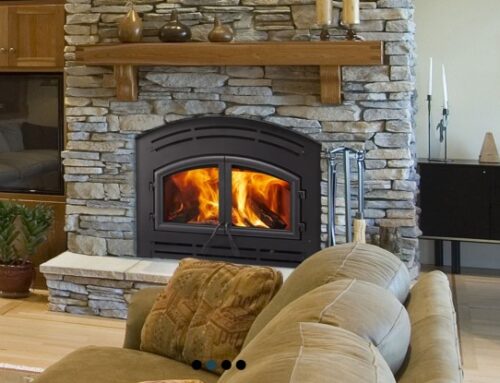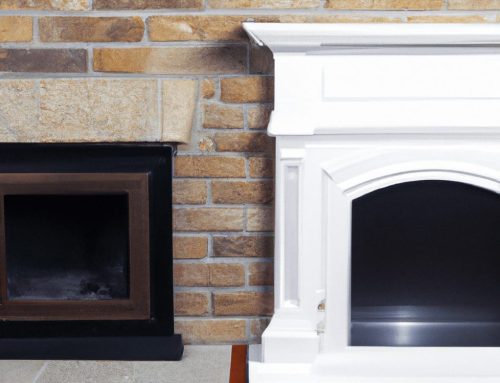Vent Free or Un-vented:
A vent-free gas fireplace operates without a chimney, flue or vent, therefore you don’t need any fireplace venting for this type, and it can be installed just about anywhere.
Modern vent-free gas fireplaces:
- Are inexpensive and have low operating costs.
- Are 99 percent energy efficient and provide warmth during power outages.
- Are Design-Certified to the latest national safety standards (ANSI Z21. 11.2)
- Do not exceed 40,000 Btu/hr of heat output.
- And is a source of pleasure for years to come.
- Eight million American homes and more than 45 million households worldwide already enjoy the comfort and convenience of vent-free gas fireplaces. In fact, more Americans are buying vent-free gas fireplaces than any other type of supplemental gas heating product. However, there are some areas where these units are restricted. Consumers must check with their local building departments before purchasing.
How they work: Vent-free appliances operate on natural or propane gas. Most models require no electricity. Natural or propane gas fuels the flame through a permanent line that is connected to a blue-flame/yellow-flame burner or ceramic plaque burner within the heating appliance. On the downside, they have a much smaller and less realistic fire than other fireplaces. Also, product directions usually require you to leave a window slightly open during use.
Indoor air quality: The primary gas combustion byproducts that can affect indoor air quality are carbon monoxide, carbon dioxide, nitrogen dioxide, oxygen and water vapor (humidity). Today’s vent-free appliances operate well within nationally recognized standards and recommendations for all five byproducts. American Gas Association Research Division confirms these low emission levels.
Oxygen Detection Safety-Pilot: Oxygen Detection Safety-pilot (ODS) technology was adopted by all U.S. manufacturers for all vent-free gas products in the early 1980s. ODS technology originated in Europe, where it has been used for more than half a century with an outstanding record of safety. The Consumer Product Safety Commission (CPSC) accident/incident data compiled since 1980 show no documented deaths due to emissions associated with the use of an ODS-equipped vent-free gas heating appliance. Industry engineers say the ODS pilot is to gas what a circuit breaker is to electricity.
How the ODS works: The ODS system consists of three main components:
- A precisely designed, oxygen sensitive pilot burner that regulates flame characteristics
- A thermocouple positioned in the mantle of the pilot flame
- A safety shut-off valve
The pilot is designed to be stable within a very narrow operating range. The thermocouple responds to changes in the pilot flame characteristics and, when heated, generates a millivoltage, which keeps the gas supply valve in the open position. If low levels of oxygen are detected by the ODS system, the flame extinguishes. The loss of flame causes the thermocouple to cool. This cooling reduces the millivoltage, which causes the gas valve to return to its normally closed position, thus turning off the fuel supply to the appliance. This extinguishes the flame and the pilot. The unit will not operate until the living space is properly ventilated and adequate oxygen is introduced, and the pilot is relighted.
It’s tamper- resistant: Every ODS system contains a precision orifice. This orifice will disintegrate with any attempt at drilling it out to enlarge the pilot flame. Additionally, it is not interchangeable with a normal standing pilot. Furthermore, propane and natural gas vent-free products cannot be converted from one type of gas to another. Many safety features ensure reliable operation, Besides the ODS valve, every vent-free heating appliance is also equipped with:
- An automatic shut-off valve, which stops the flow of gas if the pilot extinguishes or the gas
flow is interrupted in any way - Precision-engineered burners to produce the cleanest, most complete gas burn, with no lift-off or flashback when subjected to low input rates, low pressure, or drafts
- An internal, non-adjustable pressure regulator that prevents over firing in case of increased gas pressure
- An ignition device, usually a Piezo igniter, which eliminates the need for matches
- Defined cabinet temperature limits for wall or floor-mounted heaters
- A defined distance to combustible surfaces for all gas appliance categories
- Safety grills for heaters, fire screens, and hoods for gas logs.
Source: ventfree.org













Leave A Comment
You must be logged in to post a comment.